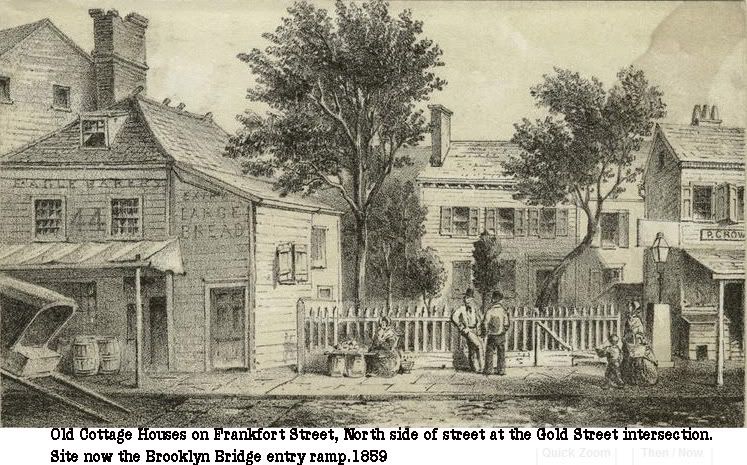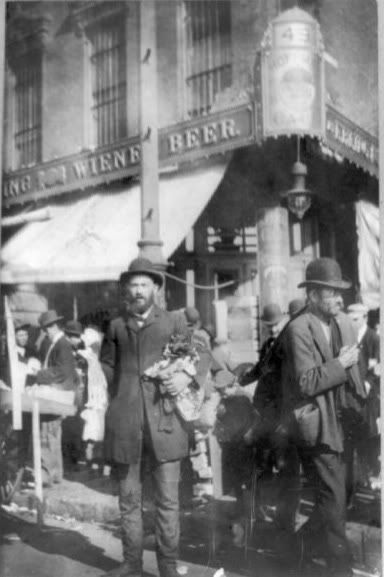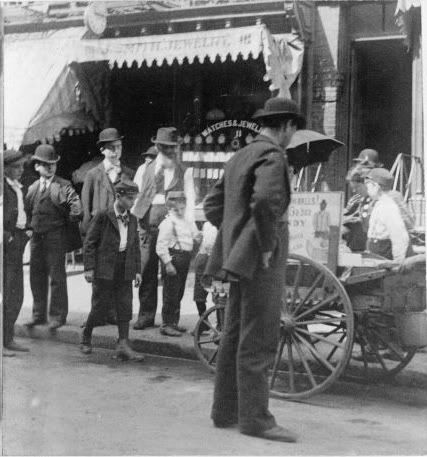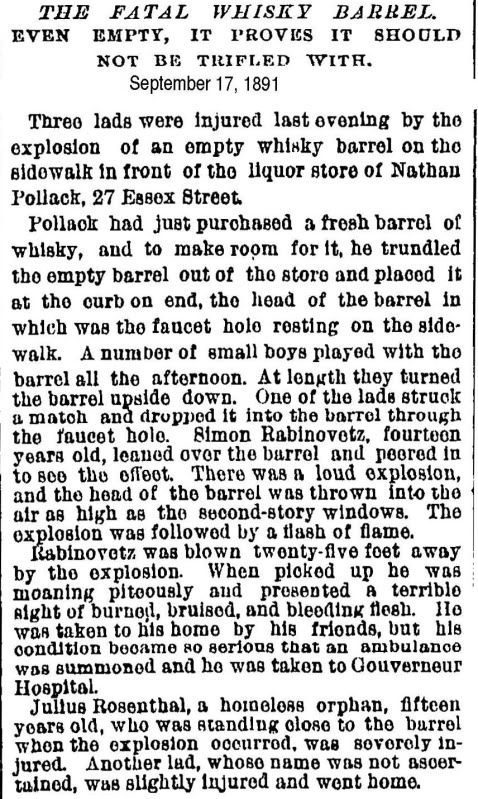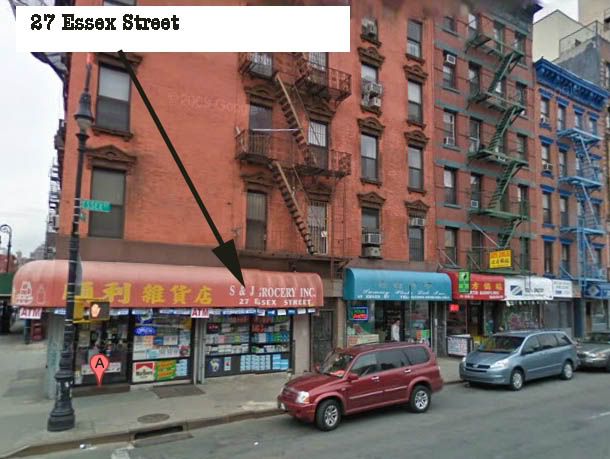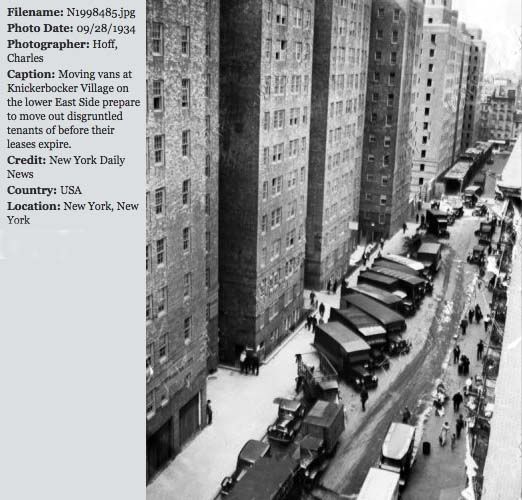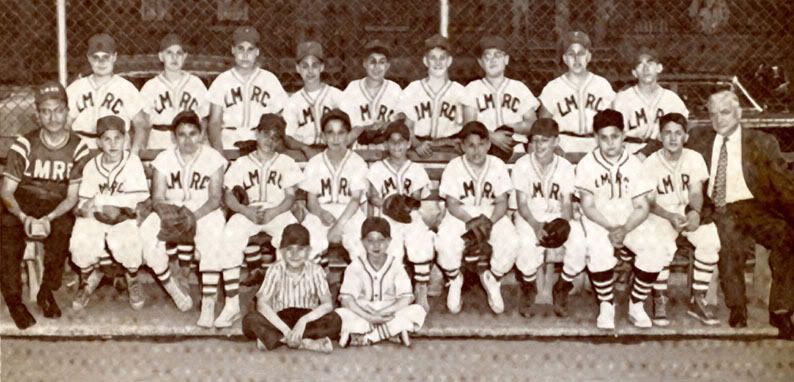While researching Philip White’s life in postbellum New York City, Peterson used city directories to uncover that while White had moved his residence from Lower Manhattan to Brooklyn in 1870, his pharmacy remained in its same location in Manhattan until his death in 1891. Peterson wondered why, since he moved his home, White hadn’t also moved his business, either in 1863 in the aftermath of the Draft Riots (which traumatized the black community), or in 1867, when he married Elizabeth Guignon? So she decided to walk the streets where White’s home had once been located—and found the entrance ramp for the Brooklyn Bridge. To build the unsuspended approaches and anchorages leading up to the bridge’s span on the Manhattan side, “this required clearing six blocks between Chatham and Water and Frankfort and Duane Streets…Philip’s drugstore on the corner of Frankfort and Gold was saved, but his home on Vandewater Street was demolished” (311). City directories led to city maps which led to city streets which revealed urban renewal – and a crucial piece of Peterson’s story.View a booktalk by Professor Peterson on cspan She will we speaking at the Brooklyn Museum on Saturday February 4, 2012
Thursday, February 2, 2012
90 Gold Street: Site Of Philip White's Pharmacy
below from NYPL Digital Gallery, The New York Public Library
Carla Peterson talks about her ancestor Philip White in her book, Black Gotham: A Family History of African Americans in Nineteenth-Century New York City
Friday, January 27, 2012
Revisiting Pickup On South Street
My daughter Emma is taking a really interesting film class at Clark University with a Professor Michael Siegel
SCRN 120 - History of U.S. Film Since 1950 The history of post-WWII American cinema is the story of an ongoing series of adjustments to (or developments within the context of) instability in postwar film business: film noir, 3-D, biblical epics, blockbusters, art film influences, “new blood” from TV and film schools, Black filmmaking, revisionist genre films, high-concept filmmaking, etc. Further complicating this process of adjustments, cinema was overlaid onto, and consequently influenced by, the political turmoil within American society in general: the “Red Scare,” the Vietnam War, the emergence of a mass counterculture, the antiwar movement, Watergate, Reaganomics, the end of the Cold War and increasingly vocal demands by women and minorities for social equality (and media representation).One of the films she viewed was Pickup On South Street. I've talked about the film and Sam Fuller several times here and I always assumed some scenes were filmed on location. Evidently according to this blogger they weren't. However, in part 2 of the film embedded above, it looks like at about the 5:36 mark a shot is filmed near the Brooklyn side of the Manhattan Bridge. I can make out other NYC shots in other scenes, but evidently the outdoor views from Widmark's dockside shack, towards the end of the clip above, are fake.
Saturday, January 7, 2012
When I'm 64
When I get older losing my hair,
Many years from now,
Will you still be sending me a valentine
Birthday greetings bottle of wine?
If I'd been out till quarter to three
Would you lock the door,
Will you still need me,
will you still feed me,
When I'm sixty-four?
oo oo oo oo oo oo oo oooo
You'll be older too,
(ah ah ah ah ah)
And if you say the word,
I could stay with you.
I could be handy mending a fuse
When your lights have gone.
You can knit a sweater by the fireside
Sunday mornings go for a ride.
Doing the garden, digging the weeds,
Who could ask for more?
Will you still need me,
will you still feed me,
When I'm sixty-four?
Every summer we can rent a cottage
In the Isle of Wight, if it's not too drear
We shall scrimp and save Grandchildren on your knee
Vera, Chuck, and Dave
Send me a postcard,
drop me a line,
Stating point of view.
Indicate precisely what you mean to say
Yours sincerely, Wasting Away.
Give me your answer,
fill in a form
Mine for evermore
Will you still need me,
will you still feed me,
When I'm sixty-four?
Tuesday, December 20, 2011
Sunday, November 27, 2011
49 Hester Street 1910
This picture was taken just around the corner from 27 Essex Street where garbage was to accumulate a year later. The gentlemen in the foreground is selling socks just in front of the obligatory corner German bar of that era. In time, as the neighborhood would be more densely populated with different Eastern European immigrants, those bars would be less popular and merchant stores would predominate. In 1968, the artist Grace Hartigan would write that Henry's fruit stand which was then located at this address would inspire the painting of her "East Side Sunday." Note: Henry's, at that time, was next to Hollander's Pickles
11 Hester Street 1896
This block is now incorporated into the Seward Park housing site, completed in 1960 . It would be just east of the intersection of Suffolk and Hester. An 1891 real estate map would show a coal yard just north of the address. An up close view would show J. Smith selling watches and jewelry at number 11 and a man viewing a candy display featuring what appears to be boxes of candied balls at 5 cents a box. Some of the young boys are wearing civil war era hats also known as cheese-cutters due to its narrow, sharp brim. It evidently was popular at the time. In 1891 five barrel lots of rock candy went for 7 cents a pound.
Saturday, November 26, 2011
27 Essex Street: Then And Now
The then has a reference to the 1911 garbage strike. The notation in the picture incorrectly refers to PS 26. What is meant is PS 62 which was across the street on the eastern side of Essex at that time.
About the 1911 strike from secondat
An article in the New York Times gives some background. The men demanded that they be able to work during daylight hours, mainly for reasons of safety, and the Sanitation Department, which employed them, refused to grant this demand. A snide letter to the editor gives one person's reaction: The reason for the cleaners' strike Is plain to one who's smart; Like most of us they want to choose Their hours a la carte. The city hired strikebreakers and the work stoppage was soon brought to an end. Times letter writers saw the conflict as a test of power between the Teamsters Union and city government. Some supported the union and some supported government, but most simply wanted their ashes collected and the streets cleared of accumulating trash. LC's photos are from its Bain News Service collection. The garbage trucks of the day consisted of one man, one horse, one cart. The city operated more than 20,000 of them. I appreciate the dignity of the horses shown in the photos: alert, patient, and strong. The images seem to show a police force intent on preserving order without taking sides. In them the faces of strikebreakers show a lack of confidence, maybe just nervousness, maybe fear. The faces of the crowds in the street show everything from anger, to interest in the spectacle unfolding before them, to the well-known New Yorker's seen-it-all aloofness.What I gleamed from David Ziskind's One Thousand Strikes The workers were striking for a 48 hour week and relief from annoying regulations and arbitrary discipline. When any driver was found with garbage containing ashes, even though they may have been mixed by householders, the driver was fined several days pay.
Friday, November 25, 2011
Thursday, November 24, 2011
Subscribe to:
Posts (Atom)

